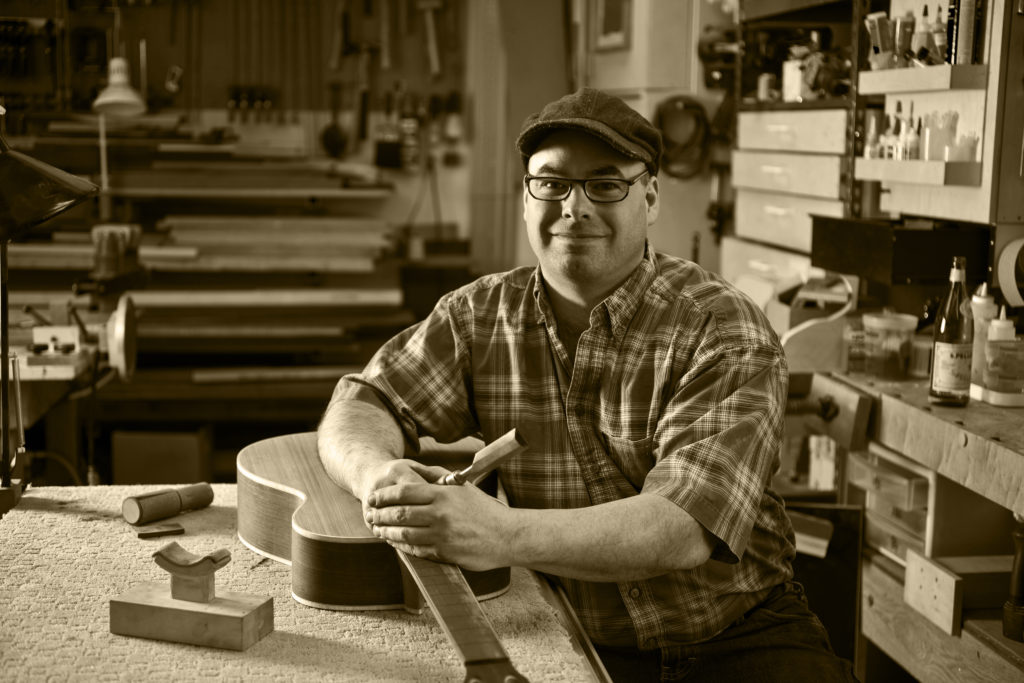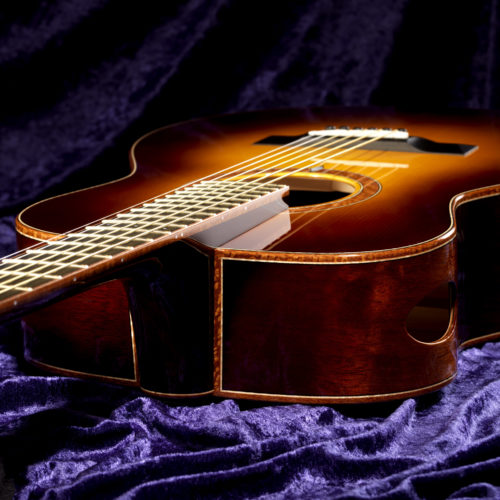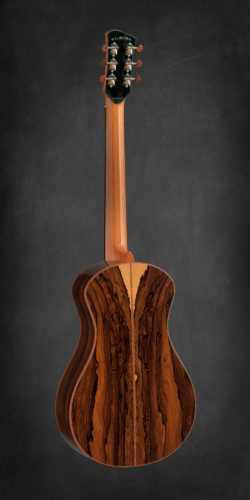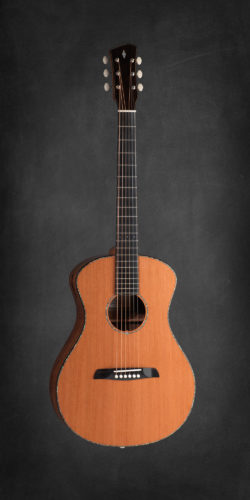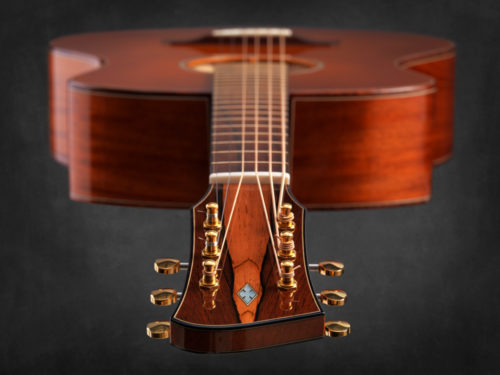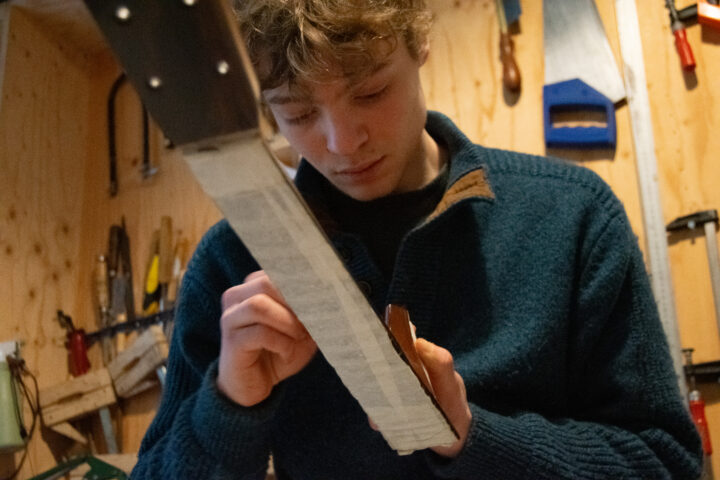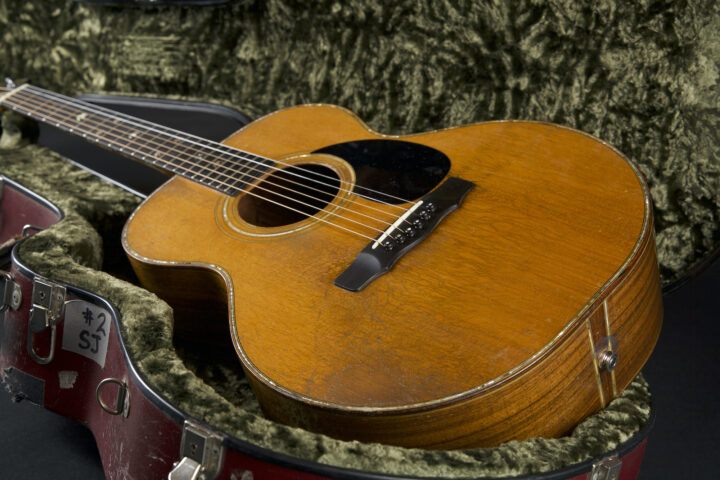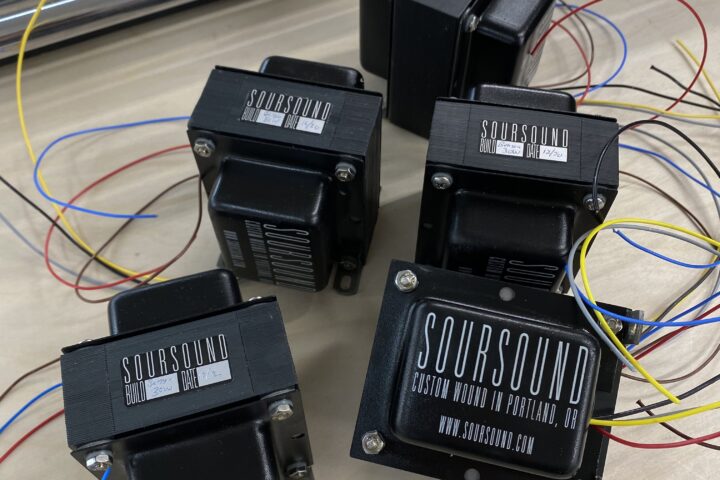For our latest Bench Press column, we talk to Ben Wilborn of Wilborn Guitars, a one-man lutherie shop in the unlikely locale of Reno, Nevada. Ben is a player as well as a luthier, and it is clear that he approaches the unique design of his acoustic steel string guitars with attention to detail and sensitivity to letting the wood speak for itself. He tells us about his relationship to wood and the sustainably elusive nature of perfection, which shed light on the refined, understated aesthetic, and “powerful, balanced sound” of his guitars.
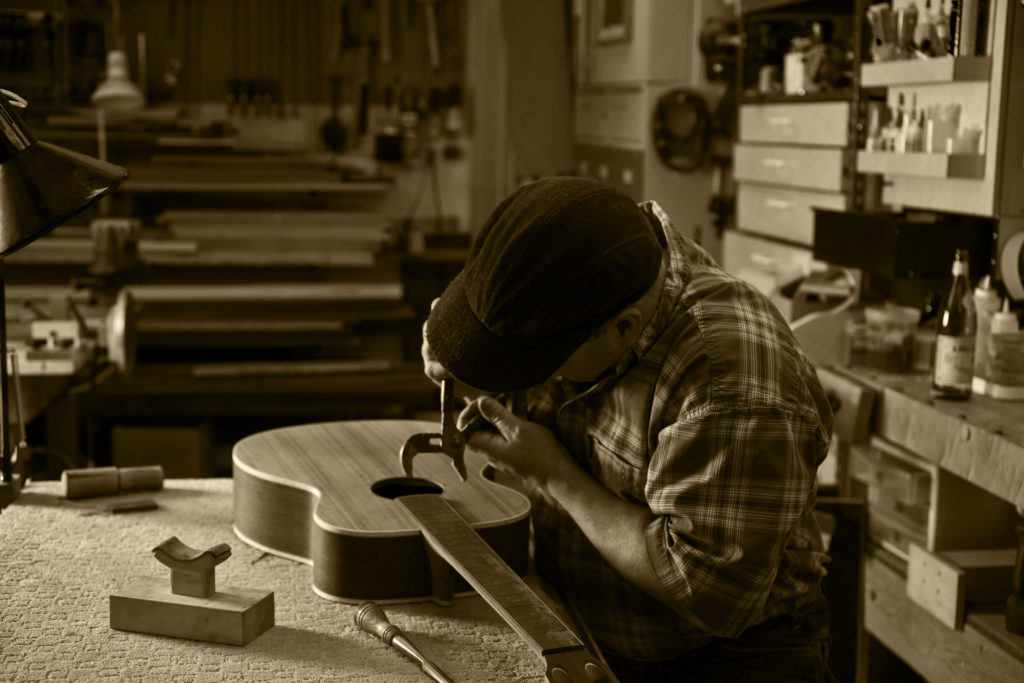
Fretboard Journal: What’s on your bench right now?
Ben Wilborn: I just started work on a red spruce and highly figured myrtle EllieBelle. The EllieBelle is my 15″ guitar–my OM, so to speak. I am excited about this myrtle. I bought quite a few boards of this wood from my local lumberyard. The figure is quite varied, but uniformly beautiful. I have developed a method of oxidizing the wood to a deep chocolatey brown while accentuating the figure, and this will be this technique’s maiden flight on a built guitar. Myrtle is a wonderful sounding wood, and its tendency to develop amazing figure is even greater than that of maple. The only drawback is its color, which can be a bit on the bananas-and-cream-mixed-with-dishwater side of things, so this oxidation technique is really promising.
FB: Could you tell us a little more about your oxidation method for the myrtle?
BW: Lets see: My myrtle finish… It’s a very old process using some antique chemicals along with some modern dyes, but I think I will remain somewhat secretive about it. I’m never secretive, so I just want to see what it feels like…
FJ: Can you tell us a little about how you got started?
BW: My wife had just given birth to our second child, Ellie. Things were very quiet and sleepy. I decided that I would use our downtime to try to build a guitar, which seemed like a nice quiet pursuit. I bought a book, and assembled a rudimentary guitar shaped object according to its directions. It was crude, but it made music, and something deep inside me was stirred. Most people would say that changing careers at 40 years old, abandoning an established and functioning business (I was a contractor) just at the moment when a new baby joins the family, and entering a new, esoteric and famously penurious trade, would be the height of foolishness. But I did just that, and somehow, nearly 150 guitars later, I have not yet known a day I didn’t have a commissioned guitar on my bench. I feel extremely fortunate about that, and never a day goes by that I am not happy for the change. I have the best job in the world.
FJ: Where do you find inspiration?
BW: I guess I would have to say that my chief inspiration is always the last guitar I have built. It’s sort of a perpetual-motion machine. Each guitar I build inspires questions, new ideas, and a desire to make the next one even better. I am also inspired by my materials. I have this feeling, this eagerness and enthusiasm, that is engendered when I look through my ridiculously large stash of wood. An ordinary person would say it’s almost moronic, or at least Pavlovian, how I react to wood. I don’t actually start drooling, but wood is the medium of this relentless drive to make these beautiful, delicate, exquisite machines, and there is always new promise in wood’s lovely patterns, sounds and smells.
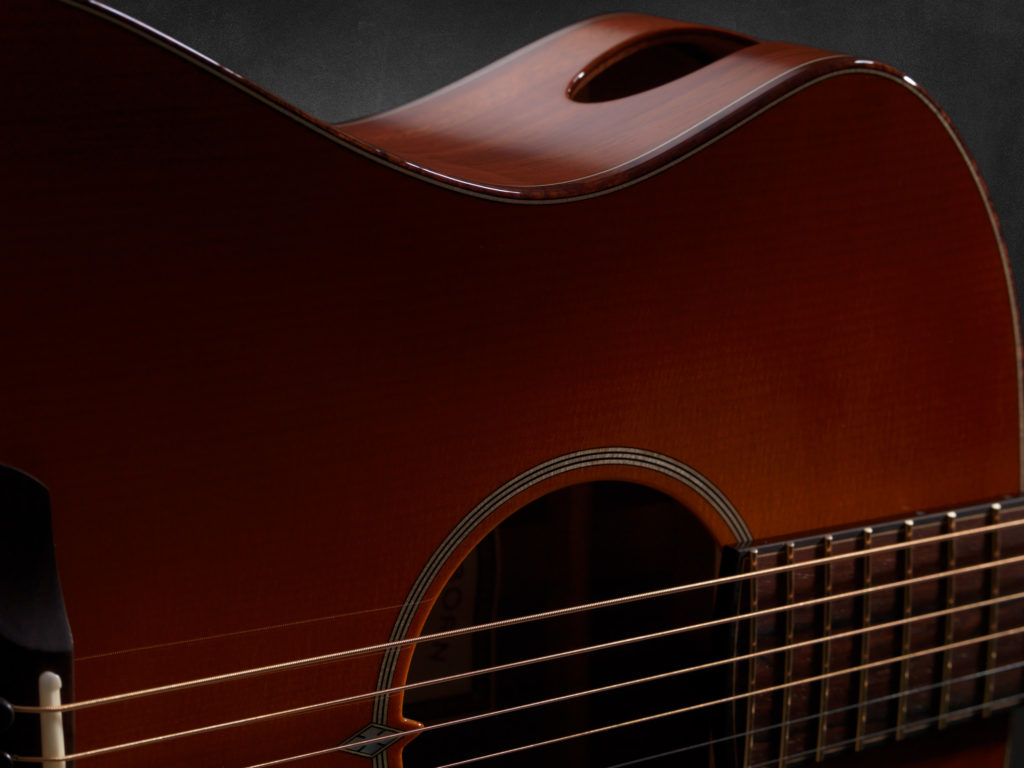
FJ: Do you have a favorite guitar that has crossed your bench?
BW: I can’t say that I’ve had a favorite that has withstood the charms of subsequent builds. I have stumbled upon wood combinations, or improvements on my building techniques that make a particular instrument stand out in my memory, but it really feels more like a continuum of guitar-ness to me. I am always in love with what is on my bench.
FJ: Can you tell us a little about your shop?
BW: My shop is my tiny kingdom, and the room where I am happiest. It is the place that is mine in the world. It is insanely detailed – a product of 16 years of refinement. It’s funny; my personal appearance is sloppy – I always wear glue stained shirts and probably look like a bum. But my shop is immaculate. It is crammed with specialized tools and jigs. I try to maintain it in a way that is conducive to the highest standard of workmanship. I know that there are builders who can bring forth a masterpiece from the most cluttered, disorganized, chaotic mess of a workspace, but I treasure the serenity and ease of flow that comes with a well organized workshop. Over the years I have spent countless hours dovetailing the spaces for specific tasks into my little 700 square foot kingdom.
Being a builder in a specific location doesn’t seem to have much influence on my work. My shop is carefully climatized, so it could just as well be in Portland or Mojave. The majority of my orders come from my internet presence, and guitar exhibitions. If I had to rely entirely on the local population for my sales, I would be one skinny luthier.
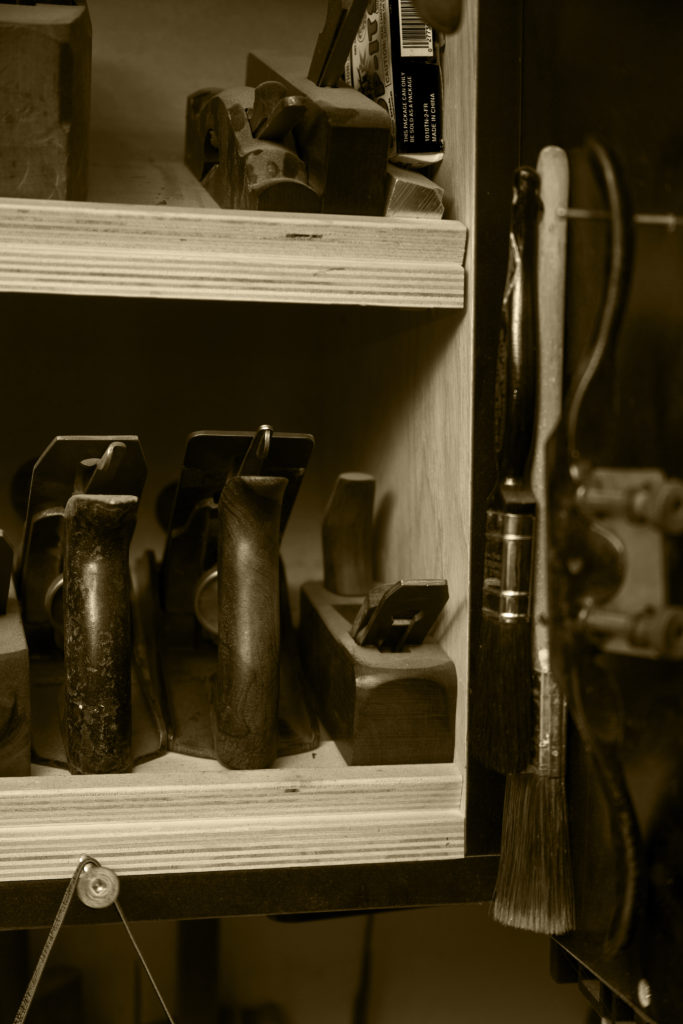
FJ: Do you have a particular philosophy about wood?
BW: I want to stay out of its way. There is no decoration more beautiful than the grain of wood, and no shape more elegant than the curves of a well-proportioned instrument. I have built “fancy” guitars, but they always have filled me with remorse; “Why did I sully that beautiful ebony fingerboard with crass filigree?” Every time I get an idea for a decoration, I diminish it by half, and have found that to be a good starting point for the evolution of its diminution… growing smaller and smaller over a series of builds until it disappears entirely.
FJ: Are there upcoming projects that you are particularly excited about?
BW: I am going to build a guitar entirely out of local wood for the Local Wood Challenge (LWC) happening at this year’s Vancouver show. This is particularly challenging for someone from Reno, where most of the trees look like Charlie Brown’s christmas tree. I can’t very well build it out of sagebrush. It’s an interesting challenge, and it addresses the sad fact that the days of plentiful exotic hardwood are coming to a close. The radius of the area one might call “local” is unspecified, so I may be looking to Central California. At any rate, I think it’s a cool idea, and I am looking forward to participating.
FJ: You said of your guitars that “there’s no room for error.” How did you address the possibility of minor imperfections in something so precise and yet made by human hands, when you started out making guitars? How do you approach the question of perfection in your craft?
BW: This is a really good question. The standard of perfection expected from contemporary steel string builders is extremely high. I was attracted to this trade in part because I speak that language. That is, I actually find it pleasant and engaging to spend a lot of time on the accuracy of details that will most likely never be seen. However, I am quite aware that certain types of imperfection are very nice. The idea of a “makers mark” is not just a justification for imperfect work, but an allowance for the aesthetic that reveals a piece of work to be the product of human hands, and not a machine. The work of violin makers comes to mind. Tool marks are left; finishes are pleasantly uneven. But I don’t know how to do that. I don’t know where that line is, and as a result I want things to be as perfect as I can make them. This is not at all to make the absurd claim that my work is perfect, because it surely is not. But, being fundamentally unattainable, perfection as a goal is durable, and as long as I don’t grow jaded, I will always have something to work towards.
